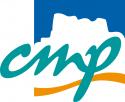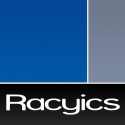UB02 Session 2
Date: Tuesday 20 March 2018
Time: 12:30 - 15:00
Location / Room: Booth 1, Exhibition Area
| Label | Presentation Title Authors |
|---|---|
| UB02.1 | ARCHON: AN ARCHITECTURE-OPEN RESOURCE-DRIVEN CROSS-LAYER MODELLING FRAMEWORK Authors: Fei Xia1, Ashur Rafiev1, Mohammed Al-Hayanni2, Alexei Iliasov1, Rishad Shafik1, Alexander Romanovsky1 and Alex Yakovlev1 1Newcastle University, GB; 2Newcastle University, UK and University of Technology and HCED, IQ Abstract This demonstration showcases a modelling method for large complex computing systems focusing on many-core types and concentrating on the crosslayer aspects. The resource-driven models aim to help system designers reason about, analyse, and ultimately design such systems across all conventional computing and communication layers, from application, operating system, down to the finest hardware details. The framework and tool support the notion of selective abstraction and are suitable for studying such non-functional properties such as performance, reliability and energy consumption. More information ... |
| UB02.2 | GENERATING FULL-CUSTOM SCHEMATICS IN A MIXED-SIGNAL TOP-DOWN DESIGN FLOW Authors: Tobias Markus1, Markus Mueller2 and Ulrich Bruening1 1University of Heidelberg, DE; 2Extoll GmbH, DE Abstract Design time is one of the precious assets in the cycle of hardware design. The top down methodology has been used in digital designs very successfully and now we also apply it for analog and mixed signal designs. Generating most of the structures automatically saves time and avoids errors. A Top Down Design Flow for Mixed Signal Designs is used which generates the schematic structure from the system RNM representation. Since the structural verilog part of the system level design will automatically generate the schematic structure it is only the functional part which is missing and has to be implemented by the analog designer. Some often used blocks can be used as an entry point to partially generate parts of the design in the schematic and furthermore even parts of the layout. We will demonstrate this design method with an example project. More information ... |
| UB02.3 | OISC MULTICORE STENCIL PROCESSOR: ONE INSTRUCTION-SET COMPUTER-BASED MULTICORE PROCESSOR FOR STENCIL COMPUTING Authors: Kaoru Saso, Jing Yuan Zhao and Yuko Hara-Azumi, School of Engineering, Tokyo Institute of Technology, JP Abstract Subtract and Branch on NEGative with 4 operands (SUBNEG4) is one of One Instruction-Set Computers that execute only one type of instruction. Thanks to its simplicity, SUBNEG4 has only 1/20x circuit area and 1/10x power consumption against MIPS processor. As SUBNEG4 is Turing-complete, it is suitable for parallel computing by multiple cores, while keeping its low-power feature. Our on-going project is seeking for effective use and deployment of SUBNEG4 cores on embedded systems. Our booth will demonstrate the significant speed-up by a SUBNEG4-based many-core processor against a conventional processor, for stencil computing. Our 64-core processor efficiently handles 2D von-Neumann neighborhood stencils, e.g., wave simulation by Verlet integration and 2D Jacobi iteration, to compute 64 points simultaneously. We show that small many-core processors can be realized even with such large number of cores while achieving good speed-up for heaving computation. More information ... |
| UB02.4 | EXPERIENCE-BASED AUTOMATION OF ANALOG IC DESIGN Authors: Florian Leber and Juergen Scheible, Reutlingen University, DE Abstract While digital design automation is highly developed, analog design automation still remains behind the demands. Previous circuit synthesis approaches, which are usually based on optimization algorithms, do not satisfy industrial requirements. A promising alternative is given by procedural approaches (also known as "generators"): They (a) emulate experts' decisions, thus (b) make expert knowledge re-usable and (c) can consider all relevant aspects and constraints implicitly. Nowadays, generators are successfully applied in analog layout (Pcells, Pycells). We aim at an entire design flow completely based on procedural automation techniques. This flow will consist of procedures for the generation of schematics and layouts for every typical analog circuit class, such as amplifier, bandgap, filter a.s.o. In our presentation we give an overview on such a design flow and we show an approach for capturing an analog circuit designer's strategy as an executable "expert design plan". More information ... |
| UB02.5 | ABSYNTH: A COMPREHENSIVE APPROACH TO FRONT TO BACK ANALOG BLOCK DESIGN AUTOMATION Authors: Abhaya Chandra Kammara S.1, Sidney Pontes-Filho2 and Andreas König2 1ISE, TU Kaiserslautern, DE; 2University of Kaiserslautern, DE Abstract ABSYNTH was first presented in CEBIT 2014 where complete, practical circuit sizing approaches have been shown using meta-heuristics on trusted simulators. This tool was then proven by its use in design of several cells in a research project. Here, we present the extension to our nested optimization approach that creates a symmetric and well matched layout in every step for every instance in the population of the swarm, that is extracted in our flow to provide feedback to the cost function impacting on the population update for more viable and robust circuits. The layout optimization presented in this DEMO works with Cadence Layout design tools. Our initial focus is, motivated by Industry 4.0, IoT, on cells for signal conditioning electronics with reconfigurability and Self-X features.[1] Abhaya C. Kammara, L.Palanichamy, and A. König, "Multi-Objective optimization and visualization for analog automation", Complex. Intell. Syst, Springer, DOI 10.1007/s40747-016-0027-3, 2016 More information ... |
| UB02.6 | TTOOL/OMC: OPTIMIZED COMPILATION OF EXECUTABLE UML/SYSML DIAGRAMS FOR THE DESIGN OF DATA-FLOW APPLICATIONS Authors: Andrea Enrici1, Julien Lallet1, Renaud Pacalet2 and Ludovic Apvrille2 1Nokia Bell Labs, FR; 2Télécom ParisTech, FR Abstract Future 5G networks are expected to increase data rates by a factor of 10x. To meet this requirement, baseband stations will be equipped with both programmable (e.g., CPUs, DSPs) and reconfigurable components (e.g., FPGAs). Efficiently programming these architectures is not trivial due to the inner complexity and interactions of these two types of components. This raises the need for unified design flows capable of rapidly partitioning and programming these mixed architectures. Our demonstration will show the complete system-level design and Design Space Exploration, based on UML/SysML diagrams, of a 5G data-link layer receiver, that is partitioned onto both programmable and reconfigurable hardware. We realize an implementation of such a UML/SysML design by compiling it into an executable C application whose memory footprint is optimized with respect to a given scheduling. We will validate the effectiveness of our solution by comparing automated vs manual designs. More information ... |
| UB02.7 | PRIME: PLATFORM- AND APPLICATION-AGNOSTIC RUN-TIME POWER MANAGEMENT OF HETEROGENEOUS EMBEDDED SYSTEMS Authors: Domenico Balsamo, Graeme M. Bragg, Charles Leech and Geoff V. Merrett, University of Southampton, GB Abstract Increasing energy efficiency and reliability at runtime is a key challenge of heterogeneous many-core systems. We demonstrate how contributions from the PRiME project integrate to enable application- and platform-agnostic runtime management that respects application performance targets. We consider opportunities to enable runtime management across the system stack and we enable cross-layer interactions to trade-off power and reliability with performance and accuracy. We consider a system as three distinct layers, with abstracted communication between them, which enables the direct comparison of different approaches, without requiring specific application or platform knowledge. Application-agnostic runtime management is demonstrated with a selection of runtime managers from PRiME, including linear regression modelling and predictive thermal management, operating across multiple applications. Platform-independent runtime management is demonstrated using two heterogeneous platforms. More information ... |
| UB02.8 | RISC-V PROCESSOR MODELING IN IP-XACT USING KACTUS2 Authors: Esko Pekkarinen and Timo Hämäläinen, Tampere University of Technology, FI Abstract The complexity of modern embedded system design is managed by advanced, high-level design methodologies such as IP-XACT. However, integrating IP-XACT as a part of an existing design flow and packaging legacy sources is too often inhibited by the inherit differences between IP-XACT and the traditional hardware description languages. In this work, we take an existing Verilog implementation of a RISC-V microprocessor and package it with our open-source IP-XACT tool Kactus2. The resulting IP-XACT description will be publicly available and based on the modeling experience we report the observed pitfalls in the transition from HDL to IP-XACT. More information ... |
| UB02.9 | EMBEDDED ACCELERATION OF IMAGE CLASSIFICATION APPLICATIONS FOR STEREO VISION SYSTEMS Authors: Mohammad Loni1, Carl Ahlberg2, Masoud Daneshtalab2, Mikael Ekström2 and Mikael Sjödin2 1MDH, SE; 2Mälardalen University, SE Abstract Autonomous systems are used in a broad range of applications from indoor utensils to medical application. Stereo vision cameras probably are the most flexible sensing way in these systems since they can extract depth, luminance, color, and shape information. However, stereo vision based applications suffer from huge image sizes, computational complexity and high energy consumption. To tackle these challenges, we first developed GIMME2 [1], a high-throughput, and cost efficient FPGA-based stereo vision system. In the next step, we present a novel approximation accelerator which is also compatible with GIMME2. Our accelerator tries to map neural network (NN) based image classification algorithms to FPGA by using DeepMaker which is an evolutionary based module embed in our accelerator that regenerates a near-optimal NN in term of accuracy. Then, the back-end side of DeepMaker maps the generated NN to FPGA. We will demo a GIMME2-based accelerator for image classification applications. More information ... |
| UB02.10 | CLAVA-MARGOT: CLAVA + MARGOT = C/C++ TO C/C++ COMPILER AND RUNTIME AUTOTUNING FRAMEWORK Authors: João Bispo1, Davide Gadioli2, Pedro Pinto1, Emanuele Vitali2, Hamid Arabnejad1, Gianluca Palermo2, Cristina Silvano2, Jorge G. Barbosa1 and João M. P Cardoso1 1Porto University, PT; 2Politecnico di Milano (POLIMI), IT Abstract Current computing platforms consist of heterogeneous architectures. To efficiently target those platforms, compilers can be extend with code transformations and insertion of code to interface to runtime autotuning schemes, which tune application parameters according to: the actual execution, target architecture, and workload. We present an approach consisting of a C/C++ source-to-source compiler (Clava) and an autotuner (mARGOt ). They are part of the toolflow of the FET-HPC ANTAREX project and allow parallelization, multiversioning and code transformations in the context of runtime autotuning. mARGOt is an autotuner that allows application adaptation to changing conditions and goals. Clava is a source-to-source compiler to transform C/C++ programs, including code instrumentation and integration with components such as mARGOt. We will demonstrate how to use Clava to integrate the mARGOT autotuner in an example application, and several mARGOt functionalities exposed through a Clava API. More information ... |
| 15:00 | End of session |
| 16:00 | Coffee Break in Exhibition Area
On all conference days (Tuesday to Thursday), coffee and tea will be served during the coffee breaks at the below-mentioned times in the exhibition area (Terrace Level of the ICCD). Lunch Breaks (Großer Saal + Saal 1)On all conference days (Tuesday to Thursday), a seated lunch (lunch buffet) will be offered in the rooms "Großer Saal" and "Saal 1" (Saal Level of the ICCD) to fully registered conference delegates only. There will be badge control at the entrance to the lunch break area. Tuesday, March 20, 2018
Wednesday, March 21, 2018
Thursday, March 22, 2018
|











